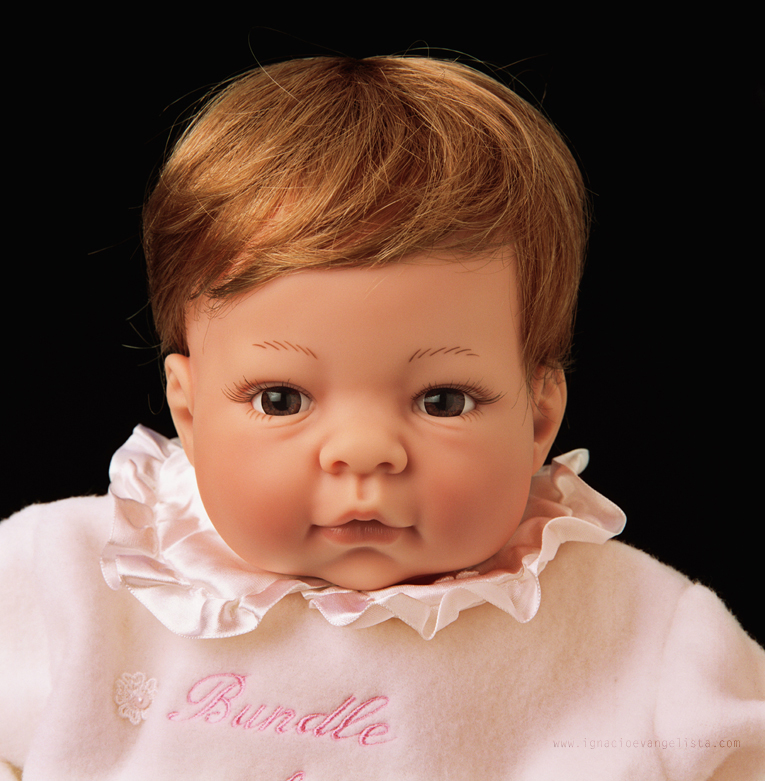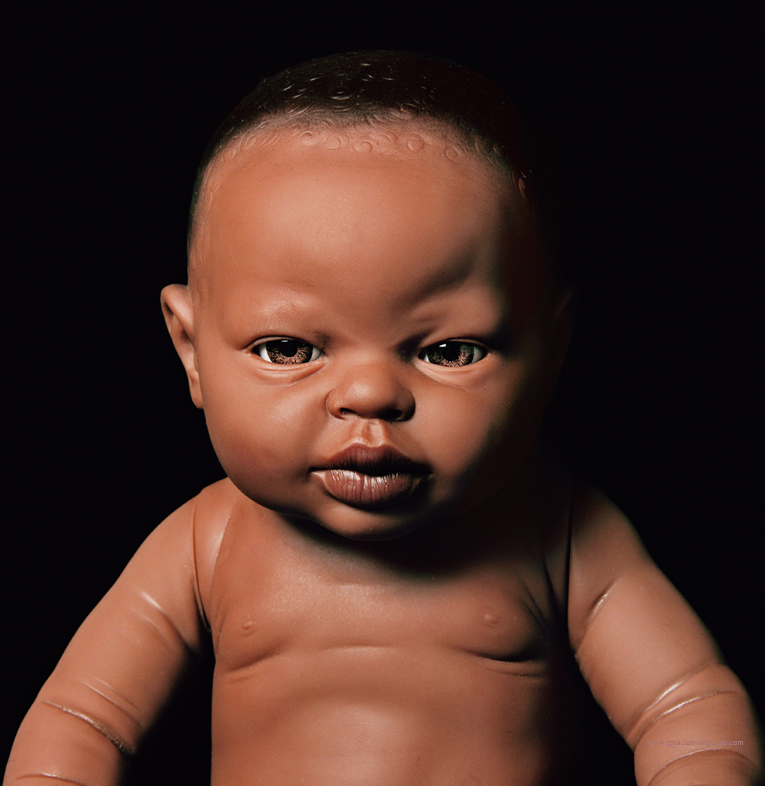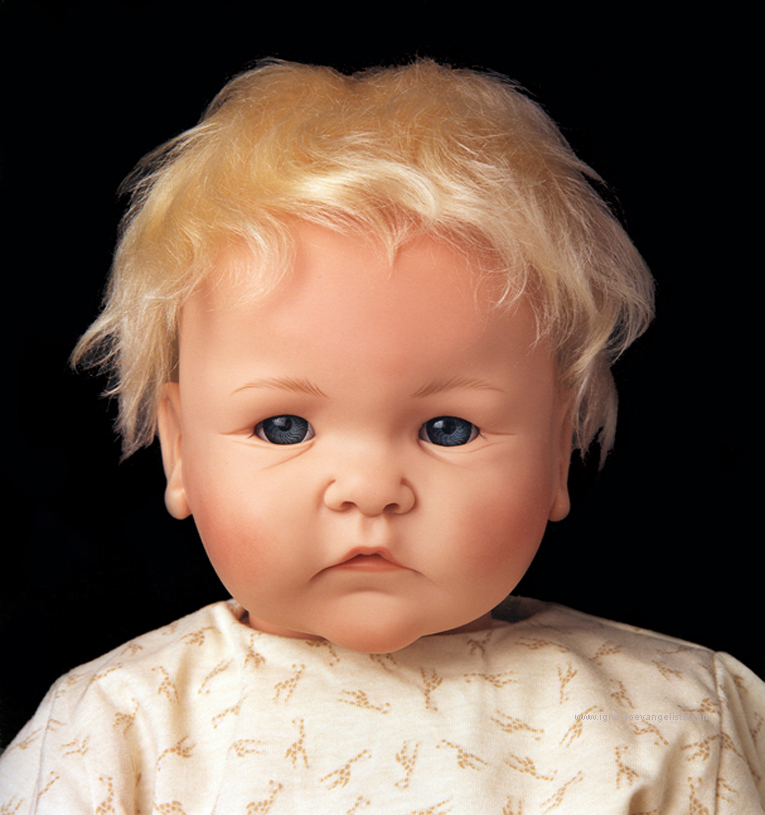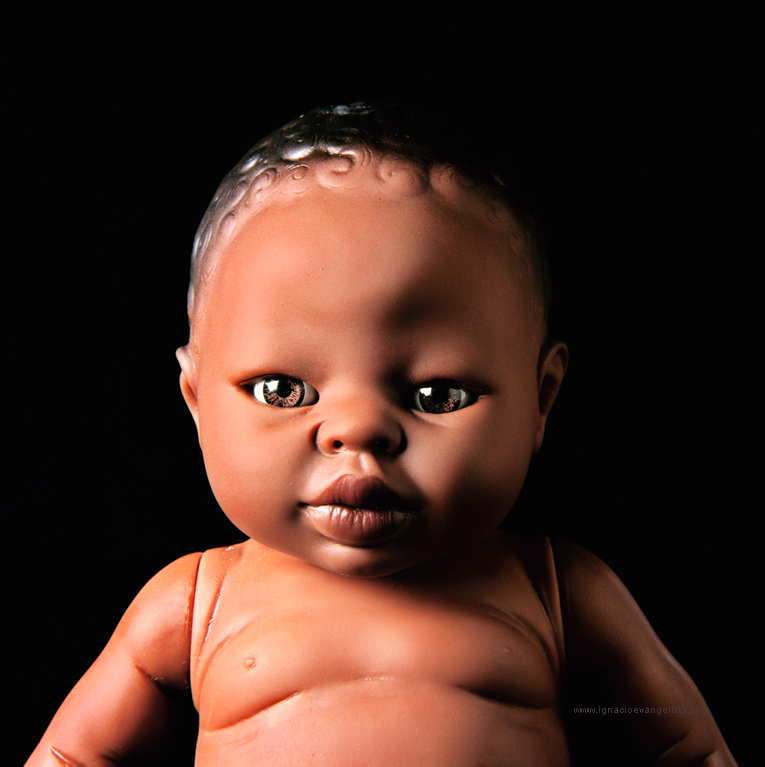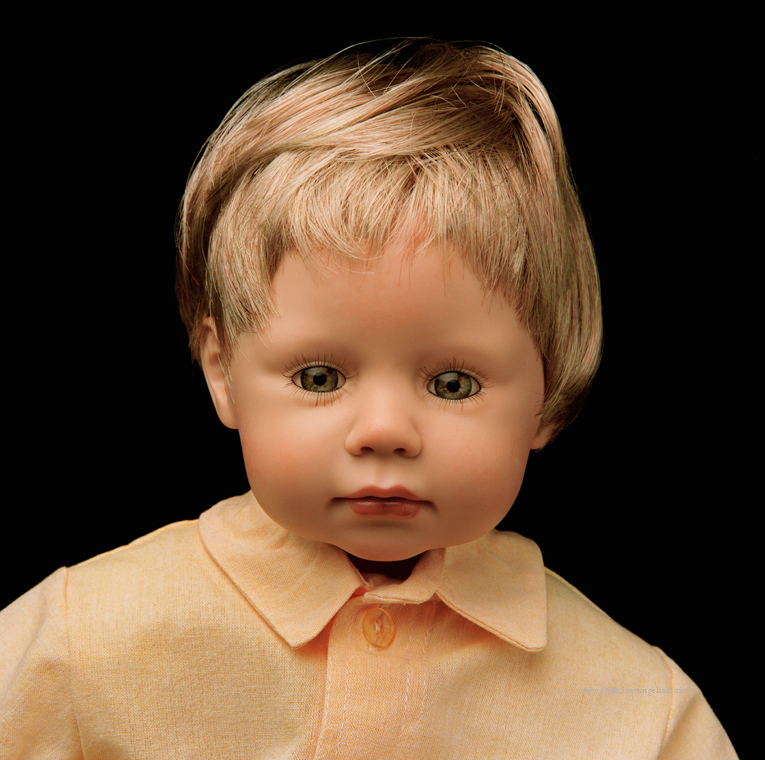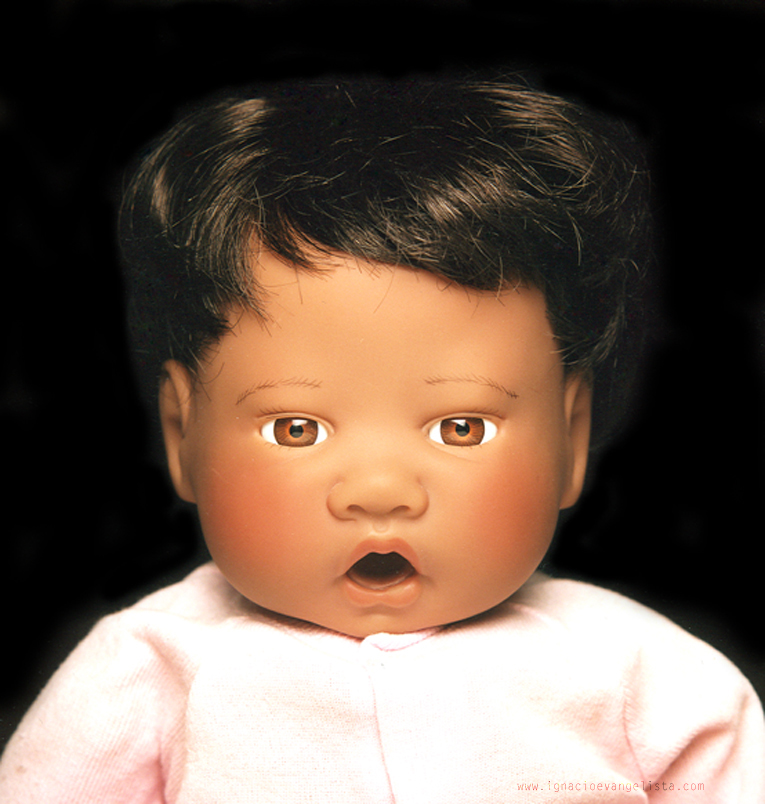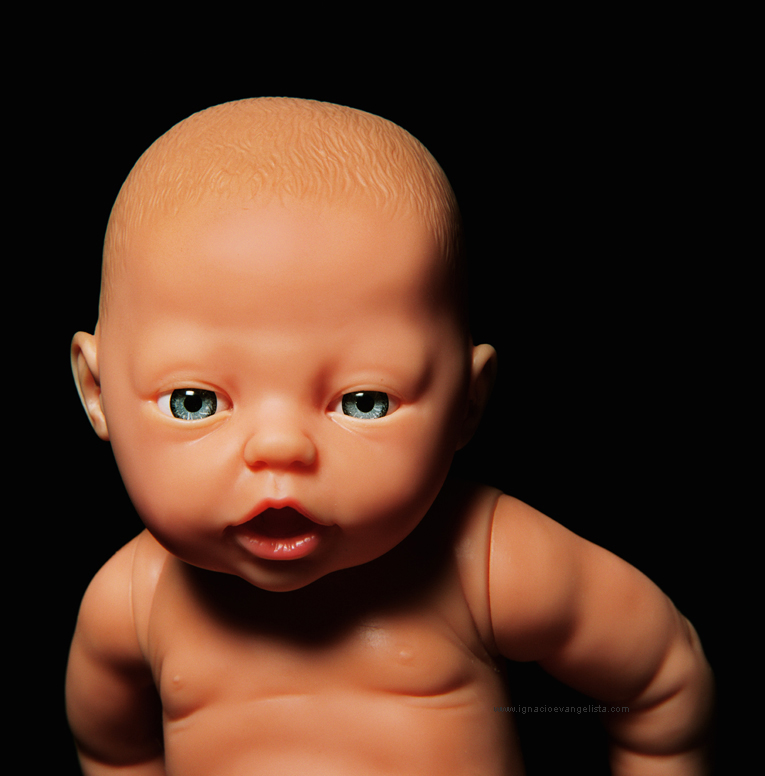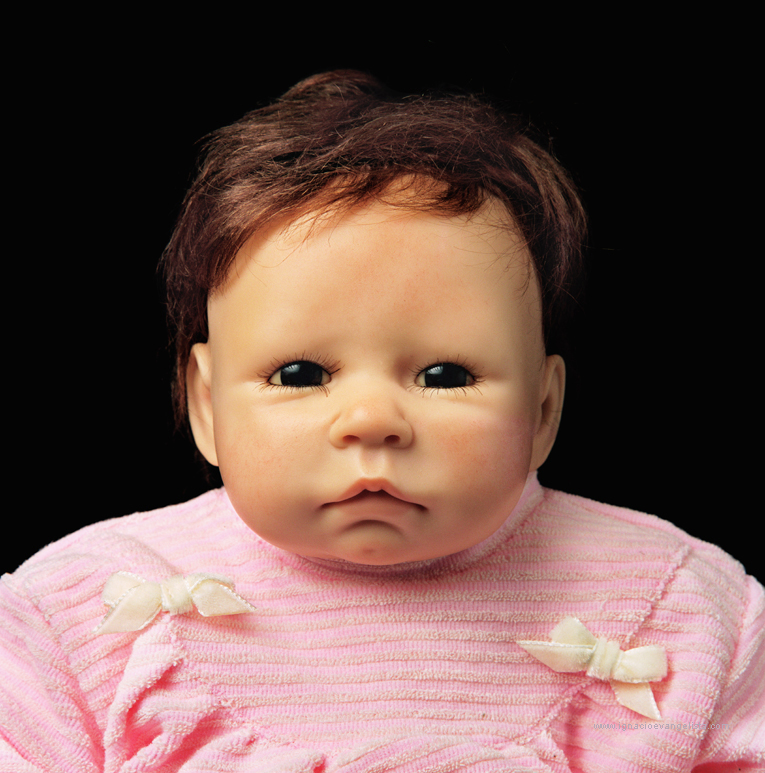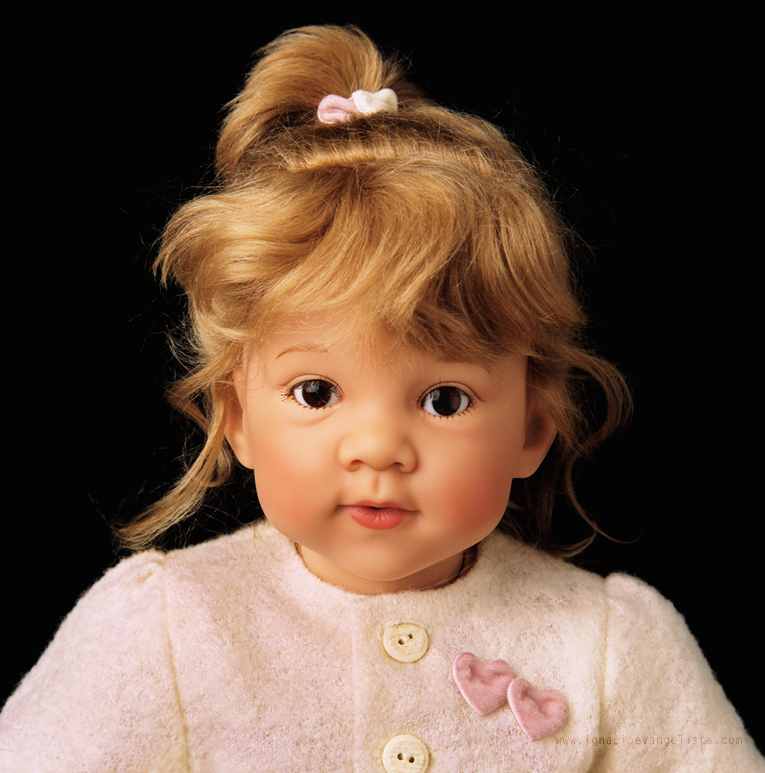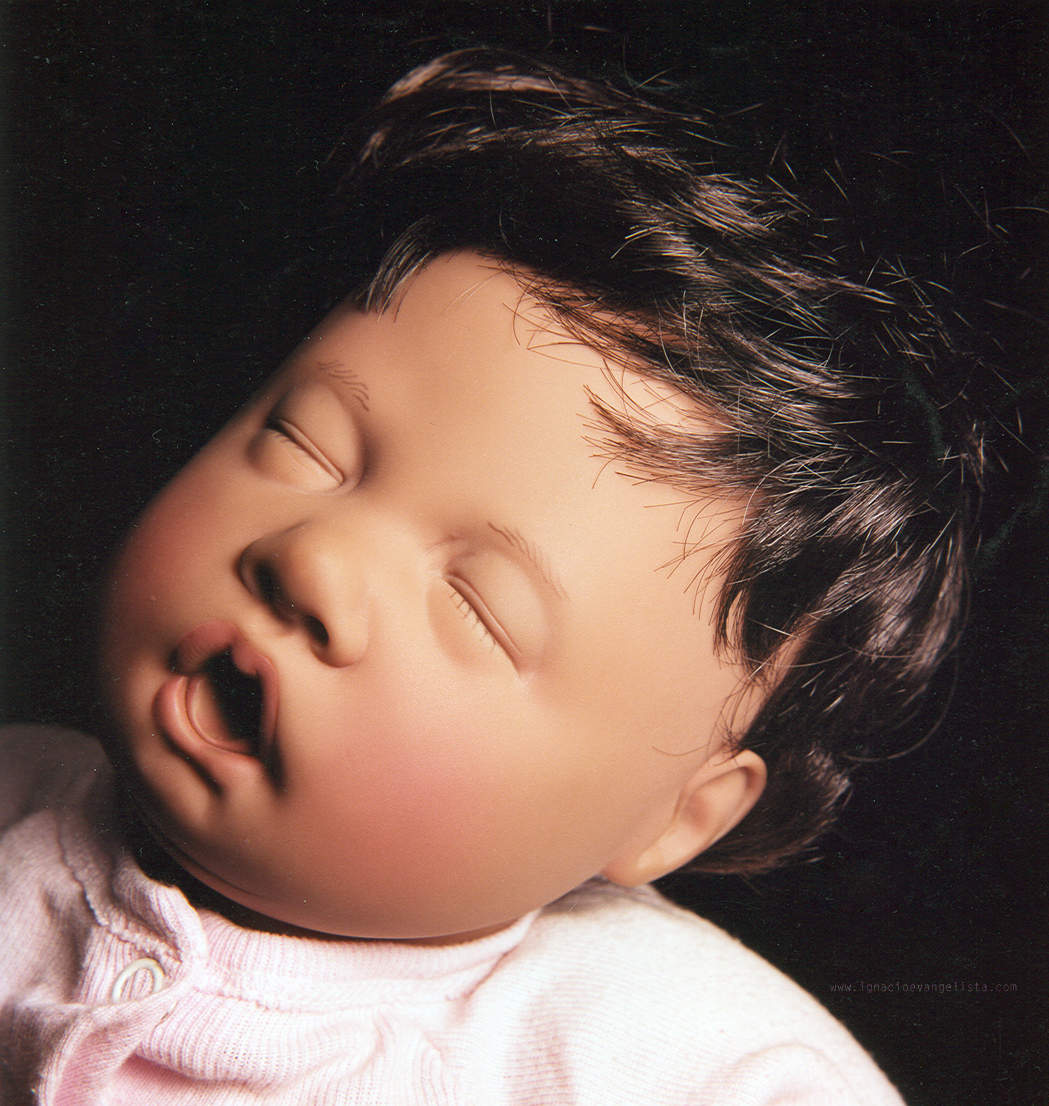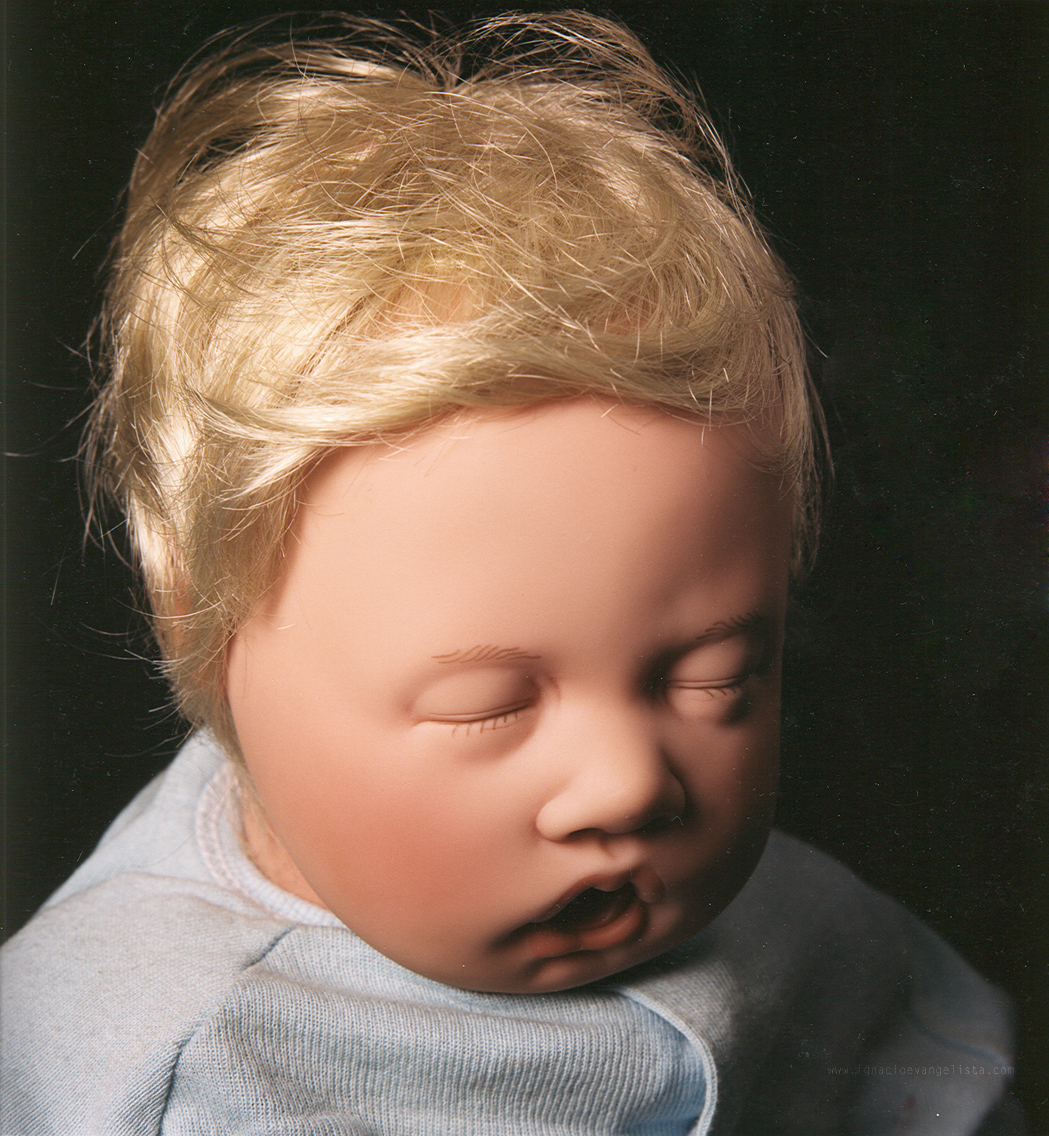ENGLISH
This work is related to the idea of appearance and truth, with what happens when we take something out of its context and place it in a different place than the one that corresponds to it.
I discovered these extremely realistic dolls in a toy shop, and I was
fascinated by the apparent contradiction of why the more real they seemed,
the more disturbing they were for adults (with children this does not
happen).
I would say this happens because they are placed, at least when
first seen, in an intervening zone (they are not alive but they seem so), and everything we cannot clasify, situate or define clearly, disturbs or produces unease in us.
“E. Jentsch pointed out, as a epitome of the sinister, the doubt of whether a being which is apparently alive, is in fact living; or vice versa: that an object without life is in some way alive, meaning with it the sense wax figures, wise dolls or “automatons” produce in us”.
(Sigmund Freud: The Sinister)
ESPAÑOL
Este trabajo tiene que ver con la idea de apariencia y de verdad, con lo que ocurre cuando sacamos algo de su contexto y lo ubicamos en un lugar distinto al que le corresponde.
Descubrí estos muñecos tan sumamente realistas en una juguetería, y me fascinó la aparente contradicción de por qué cuanto más reales parecen, más inquietantes resultan para los adultos,(con los niños no ocurre así), creo que es porque se enmarcan, al menos en una primera mirada, en un territorio intermedio (no son animados pero lo parecen) y todo lo que no podemos clasificar, ubicar o definir claramente nos produce molestia y desasosiego.
E. Jentsch destacó, como caso por excelencia de lo siniestro, la duda de que un ser aparentemente animado, sea viviente; y a la inversa: que un objeto sin vida esté en alguna forma animado, aduciendo a la impresión que despiertan las figuras de cera, las muñecas “sabias” y los autómatas” (Sigmund Freud: “Lo Siniestro”)
